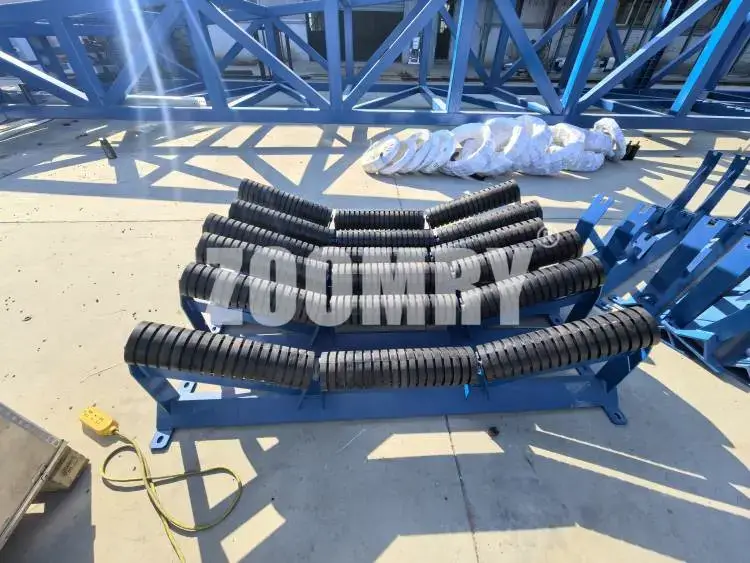Time:2025-04-17 17:02:30 Number of Clicks:
In bulk material handling operations at ports, critical components of mobile shiploaders such as drums and conveyor rollers persistently face three challenges: high dynamic stress, abrasive wear, and salt spray corrosion. At Brazilian iron ore terminals, for instance, 68% of conventional roller failures stem from bearing corrosion due to compromised seals, with an average lifespan of merely six months. ASTM test data reveal peak contact stresses on drum surfaces reaching 500 MPa—far exceeding the fatigue limit of carbon steel. Meanwhile, "three-body abrasive wear" caused by quartz sand and other hard particles progresses at 0.3 mm per 1,000 hours. Combined with lubricant emulsification risks in high-salinity environments, these factors elevate maintenance costs by over 40%.

Ultra-high molecular weight polyethylene (UHMW-PE) replaces conventional steel, exhibiting 1/7th the wear rate while reducing operational noise by 10-15 dB(A). This solution achieved a 3-year zero-replacement record at Newcastle Port's grain terminal in Australia.
Conveyor Rollers employ triple-lip labyrinth seals with inert gas purging, achieving IP67 protection against high-pressure water ingress. Bearing lifespans exceed 20,000 hours, reducing salt-induced corrosion failures by 89%.
ANSYS Workbench-driven redesign of drum rib configurations, based on 200,000-hour dynamic load spectra, reduced resonant stress peaks from 287 MPa to 152 MPa (47% decrease) at Durban Port, South Africa.
30° dual V-groove geometry with eccentric compensation mechanisms cuts belt misalignment by 70%, slashing unplanned downtime by 62% at Indonesian coal terminals.
Roller group replacement time reduced from 4.5 hours to 35 minutes, lowering aerial work risks by 80% and boosting maintenance efficiency 300%.
0-10 kHz vibration sensors and infrared thermography enable 92% accuracy in early fault detection (e.g., bearing spalling, cage fractures).
Digital twin models incorporating material moisture and throughput achieve <15% remaining life prediction errors, improving spare parts turnover by 40%.
Multi-tier logistics and localized technical teams ensure 48-hour emergency parts delivery and remote diagnostics. Smart demand forecasting optimizes inventory turnover, while multilingual support accelerates response times.
Note: Certain equipment functions and components require customization based on operational conditions.
For inquiries regarding rapid drum wear in mobile shiploaders, contact us via:
At a global hub port handling over 100 million tonnes of iron ore annually, mobile shiploaders endured severe operational challenges: six-month roller replacement cycles due to ore impact, drum surface cracking from dynamic stress, and three annual large-scale bearing corrosion overhauls from salt spray. A systematic technological overhaul achieved transformative improvements in component longevity and maintenance protocols.
Zoomry engineers employed XRD analysis and 3D topography scanning to quantify drum wear mechanisms, identifying Cr27 cladding as the optimal solution for three-body iron ore abrasion. Finite element analysis validated structural optimizations, reducing stress concentration factors from 2.3 to 1.4.
During implementation, UHMW-PE roller groups were installed during operational windows using modular retrofitting. Post-upgrade data showed 62% reduction in belt lateral vibration and 18°C drop in bearing temperature peaks.
Three-year operational data confirms roller replacement intervals extended to 38 months, with drum coating wear rates stabilized at 0.08 mm/1,000 hours. Equipment availability rose from 82% to 96%, achieving $530,000 annual maintenance savings per unit and earning Lloyd's Register's "Sustainable Port Equipment Innovation Award."
Copyright © 2002-2024 Zoomry Group Company Limited